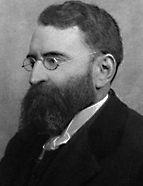

Ricardo de Almeida Jorge, born in Porto, son of a blacksmith, attended secondary school at Colégio da Lapa and studied at the Porto Medical-Surgical School (1879), where he became a professor on 5 May 1880. A doctor by training, he was a complex and eclectic personality in Portuguese scientific and cultural circles, whose activities spanned the fields of health, literature, social and human sciences, and history. Although not a historian by training, Ricardo Jorge made contributions to the field of historiography through his use of information and his clear historical research on health issues and in areas such as art, literature and the population. Egas Moniz presented him as “the great chronicler of Porto of his time and even of the city’s past”, noting that “he had a marked tendency towards historical studies, particularly those related to our science” (Lisboa Médica, no. 9, 1939), but his contribution is more wide-ranging. The recognition of the role of history in the scientific field emerged early on in his inaugural dissertation presented at the Medical-Surgical School of Porto - O Nervosismo (1879). Questioning the appropriateness of the “history of the issue” in the face of the “severe positivism” that prevailed, Ricardo Jorge argued that “today’s medicine, despite being enriched by the discoveries brought about by direct observation and experimentation, must listen carefully to the lessons of history in order to give due value to the monuments it has brought down, to gather those it left standing and subject them to the superior means of judgement acquired through its progressive evolution, in order to avoid either coexisting with past errors or plagiarising the discoveries of the past” (Um ensaio sobre o Nervosismo, 1879, p. 2). An evolutionist, he naturally started from the new beliefs of his time, seeing history as “the sole and irrefutable determinant of the laws of progress and the chain of systems, an unshakeable principle, which is nothing more than one of the many faces of evolutionism that today presides over all our scientific constructions”. The dissertation then provides a history of approaches to “nervousness”. Another text along the same lines followed, “The motor locations in the brain” (1880), for a competition at the Medical-Surgical School of Porto, and he became a lecturer on the eve of his 22nd birthday. However, these were texts on psychiatric and neuropathological connections inspired by the innovative contributions of Charcot at the Salpêtrière Hospital in Paris, who used experimental and anatomical-clinical methods. Ricardo Jorge’s focus on neurology indicated a desire to join the Conde de Ferreira Hospital for the Insane (endowed in a will in 1866 and inaugurated on 24 March 1883), an innovative institution in Portugal. This challenge was shared by two students at the time, Ricardo Jorge and Júlio de Matos, who had been friends and companions since childhood. It was this ambition that took Ricardo Jorge to Paris and Strasbourg in January 1883.
This work is financed by national funds through FCT - Foundation for Science and Technology, I.P, in the scope of the projects UIDB/04311/2020 and UIDP/04311/2020.
